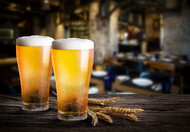Troubleshooting Common Draft Beer System Problems: A Comprehensive Guide
11th Apr 2024

Draft beer systems are a staple in bars, restaurants, and breweries, offering patrons a fresh and crisp pour of their favorite brews. However, these systems can encounter issues like excessive foaming and off-flavors, which can negatively impact the quality of the beer and customer satisfaction. In this comprehensive guide, we'll walk you through the steps to troubleshoot and resolve common draft beer system problems.
1. Check the CO2 Pressure
The first step in troubleshooting draft beer system issues is to examine the CO2 pressure. Make sure the CO2 tank has enough pressure, typically set between 10-14 PSI for most beers. Additionally, inspect the CO2 lines and connections for leaks, and replace any damaged components.
2. Temperature Control
Maintaining the right temperature is crucial for draft beer quality. Verify that the beer lines and keg are kept within the recommended temperature range, usually between 38-42°F (3-6°C). Avoid exposing the beer lines to temperature fluctuations or direct sunlight, as these can lead to foaming issues.
3. Line Length and Diameter
The length and diameter of your beer lines play a significant role in preventing foaming. Ensure that the lines are the correct length and diameter for your specific system. Longer lines and narrower diameters can cause excessive foaming. Calculate the line resistance to match the beer pressure and CO2 setting accurately.
4. Cleanliness
Maintaining a clean system is essential to prevent off-flavors and foaming. Regularly clean and sanitize the beer lines, faucets, and keg couplers using an appropriate cleaning solution following manufacturer guidelines. Beer residue and yeast buildup can lead to off-flavors and foam.
5. Glassware and Pouring Technique
The quality of glassware and pouring technique can impact beer presentation. Always use clean and properly rinsed glassware, as soap residue can cause foaming. Train staff on the correct pouring technique, which includes holding the glass at an angle and gradually straightening it as you pour to minimize excessive foam.
6. Regulator and Pressure Relief Valve
Inspect the regulator for proper functioning and adjust it if necessary to maintain the correct CO2 pressure. Ensure that the pressure relief valve on the keg coupler is not stuck open, as it can affect the pressure in the system.
7. Line Balancing
If foaming issues persist, consider balancing the draft system by adjusting the line length or CO2 pressure to match the specific beer you're serving. Each beer may have different requirements, and fine-tuning the system can prevent excessive foam.
8. Off-Flavors
Identifying and addressing off-flavors is crucial for draft beer quality. These off-flavors can result from issues such as dirty lines, improper storage, or contamination. Common off-flavors include diacetyl, acetaldehyde, and phenols. Identify the specific off-flavor and address the underlying cause accordingly.
9. Quality of Beer
Don't forget to check the quality of the beer itself. Ensure that it's fresh and has been stored properly before it reaches the draft system. Poor-quality beer can contribute to off-flavors and foaming.
10. Seek Professional Help
If you've exhausted all troubleshooting steps and still can't resolve the issue, it's advisable to contact a professional technician who specializes in draft beer systems. They can diagnose and repair more complex problems.
11. Preventive Maintenance
Implement a regular maintenance schedule for your draft system to prevent future issues. This includes routine cleaning, line replacement, and checking for wear and tear to ensure consistent beer quality.
Troubleshooting common draft beer system problems like foaming and off-flavors requires a systematic approach. By following the steps outlined in this comprehensive guide, you can identify and address these issues, ensuring that your customers enjoy a flawless draft beer experience every time. Remember to prioritize cleanliness, temperature control, and proper maintenance to maintain the highest quality beer on tap.

